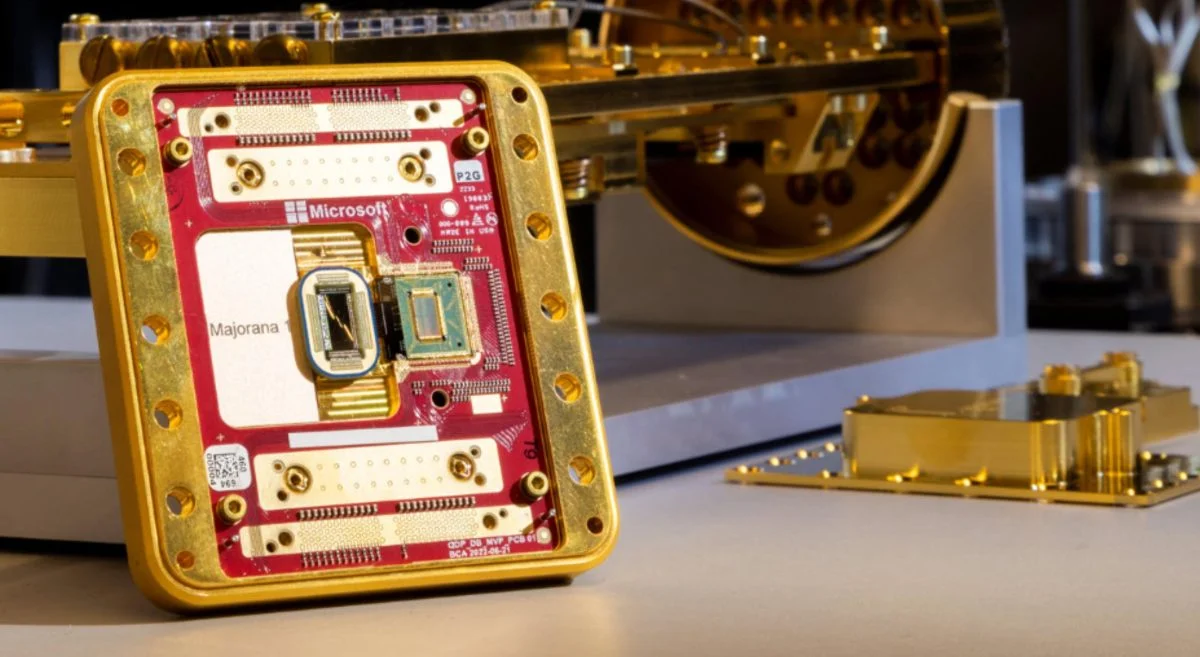A groundbreaking topological superconductor is set to revolutionize quantum computing. Microsoft and UC Santa Barbara researchers have unveiled an eight-qubit topological quantum processor, a key step toward building a fully functional topological quantum computer. This innovative chip, revealed at Microsoft’s Station Q conference, harnesses a new state of matter, promising faster and more stable quantum operations.
The Birth of a Topological Quantum Processor
Microsoft, in collaboration with UC Santa Barbara, has introduced an eight-qubit topological quantum processor, the first of its kind. This achievement is a proof-of-concept, demonstrating the potential of topological computing to solve complex problems faster than classical supercomputers.
“We’ve been working on this for years, and now we’re unveiling it all at once,” said Chetan Nayak, Director of Station Q and a professor of physics at UCSB. The research, published in Nature, outlines the key properties of these novel qubits.
Read: AI Innovation Lab to Boost Tech Growth in Karachi
Harnessing the Power of a New State of Matter
At the heart of this breakthrough is a topological superconductor, a new phase of matter. Rigorous testing confirms the presence of these states, proving their potential for quantum operations.
“This shows we can do it, do it fast, and do it accurately,” Nayak said. Researchers have also released a preprint paper detailing a roadmap for scaling this technology into a full-fledged topological quantum computer.
Why Topological Qubits Matter
Quantum computing promises to outperform classical computers by leveraging qubits, which can exist in multiple states simultaneously. However, qubits in many current systems suffer from instability and errors, limiting their effectiveness.
Topological qubits, on the other hand, store information in a way that naturally resists errors. Unlike traditional quantum systems that rely on trapped ions or photons, these qubits are based on anyons—quasiparticles that emerge from interacting particles in a superconducting nanowire.
Built-in Error Resistance
“A complementary approach to quantum error correction is building it into the hardware,” Nayak explained. Instead of requiring large numbers of qubits for error correction, topological qubits distribute quantum information across a system, making it more fault-tolerant.
The key to this approach lies in Majorana particles, first predicted by physicist Ettore Majorana in 1937. These particles are their own antiparticles and can retain a memory of their positions over time. By physically braiding them, scientists can create a stable and robust quantum logic system.
The Path to Scalable Quantum Computing
The researchers achieved this by placing an indium arsenide semiconductor nanowire next to an aluminum superconductor. Under the right conditions, the wire enters a topological phase, with MZMs forming at its ends. A larger topological energy gap makes the system more robust and efficient.
“When you increase the gap, not only does it become more stable, but it also speeds up computations and allows for a smaller, more efficient system,” Nayak added.
A Small Chip, A Giant Leap
Although the eight-qubit processor is still in its early stages, it represents a major step toward building a practical topological quantum computer. Over decades, researchers at Station Q and UCSB have worked on the materials and fabrication techniques that made this breakthrough possible.
“This progress builds on a rich history of expertise in quantum materials,” Nayak said, acknowledging contributions from UCSB researchers, including Chris Palmstrøm and Susanne Stemmer. The concept itself originates from the Nobel Prize-winning work of Herb Kroemer, a former UCSB professor.
With this milestone, the future of topological quantum computing looks more promising than ever. The next challenge? Scaling up this technology to unlock the true potential of quantum computing.
Follow us on Google News, Instagram, YouTube, Facebook,Whats App, and TikTok for latest updates
